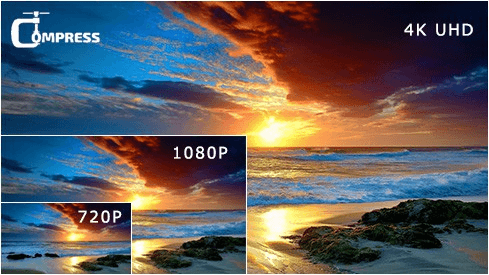What is a resolution?
Resolution can refer to either of the following: 1) The quality of the images printed or shown on a monitor is referred to as resolution. The resolution of a display is determined by counting the horizontal and vertical pixels. DPI is a resolution measurement used by printers (dots per inch). What happens when the resolution is Increased?Since there are more pixels per inch, as resolution rises, images are crisper. The fact that there are more pixels displayed per square inch may actually cause text and images to get smaller. As an illustration, increasing the resolution from 800 x 600 to 1024 x 768 would add 306,432 pixels to the overall number. In order to make the text appear smaller, those additional pixels are provided to the screen along with the same amount of text. What occurs if the resolution is decreased?Ultrawide or widescreen displays are now produced by all manufacturers. The following tables provide examples of their various resolutions. Widescreen resolutions that are common
The most common UltraWide resolutions
2) With the digital camera, the resolution is the sum of a picture's horizontal and vertical pixel counts.The resolution of a digital camera is determined by how many pixels are present in each direction of a picture. Additionally, the resolution of a digital camera may be displayed by the manufacturer in PPI (pixels per inch). A digital camera with a resolution of 2304 x 1728 PPI (2304 pixels wide by 1728 pixels tall) is an example of a device that has the same resolution as a 4 MP camera. 2304 x 1728 = 3,981,312 (near to 4 million) (close to 4 million). The optical resolution and improved resolution of photographs are additional terms used by camera manufacturers. The camera's resolution is best described by an image with no digital modifications or an optical resolution. Any image that has been digitally edited or changed, for example, by adding more pixels, is referred to as having an increased resolution. 3) A series of actions or processes that fix a problem with a product is referred to as a resolution. What are the different types of resolution?Resolution can be of two types: 1) Image resolution: The density of pixels in an image, measured in PPI, is referred to as image resolution. This should not be confused with picture dimension, which is defined as the sum of an image's row and column counts, for example, 640x480. 2) Screen resolution: The number of pixels in a display or the complete screen is expressed as display resolution or screen resolution. A display's maximum resolution is determined by how well it can physically focus light. A 15-inch 640x480 monitor, for instance, will have about 50 dots per inch of resolution. PPI would increase on a smaller monitor. The amount of pixels a screen can display both horizontally and vertically is generally referred to as its resolution. Therefore, 1,920 horizontal pixels and 1,080 vertical pixels can be seen on a screen with a resolution of 1920x1080, often known as 1080p or full HD. A display can handle a number of lower resolutions in combination to its highest resolution. For example, a 1280x1023 display may also accommodate resolutions of 1024x768, 800x600, and 640x480. While using the highest resolution on a larger monitor might produce a crisper image, it might not produce the same result on a smaller screen. On screens set up with a higher resolution than what they were designed to support, icons and text may appear to be too small. On the other side, a low screen resolution typically yields images of poor quality. Screen size vs. ResolutionSometimes, the phrases "screen resolution" and "screen size" are used synonymously. They are not equivalent, though. Screen resolution relates to the quantity and density of pixels, whereas screen size refers to the actual dimensions of the screen. From one screen corner to the other, the latter is often measured diagonally in inches. The pixel density, measured in PPI, is a crucial component since two displays that have the same resolution may have different physical dimensions. Screen size and a lack of available pixels both have an impact on how clear an image is. Similar to this, differing resolutions can exist between two displays with the same size screen. In comparison to a screen of the same size with fewer pixels, one with more pixels and a higher PPI will have a higher resolution. Two displays with the exact resolution yet different sizes will also result in lower image quality. The image will be sharper and more detailed on the smaller monitor with the same resolution because it has a higher PPI.
Next TopicWhat is the pause key
|
 For Videos Join Our Youtube Channel: Join Now
For Videos Join Our Youtube Channel: Join Now
Feedback
- Send your Feedback to [email protected]
Help Others, Please Share










